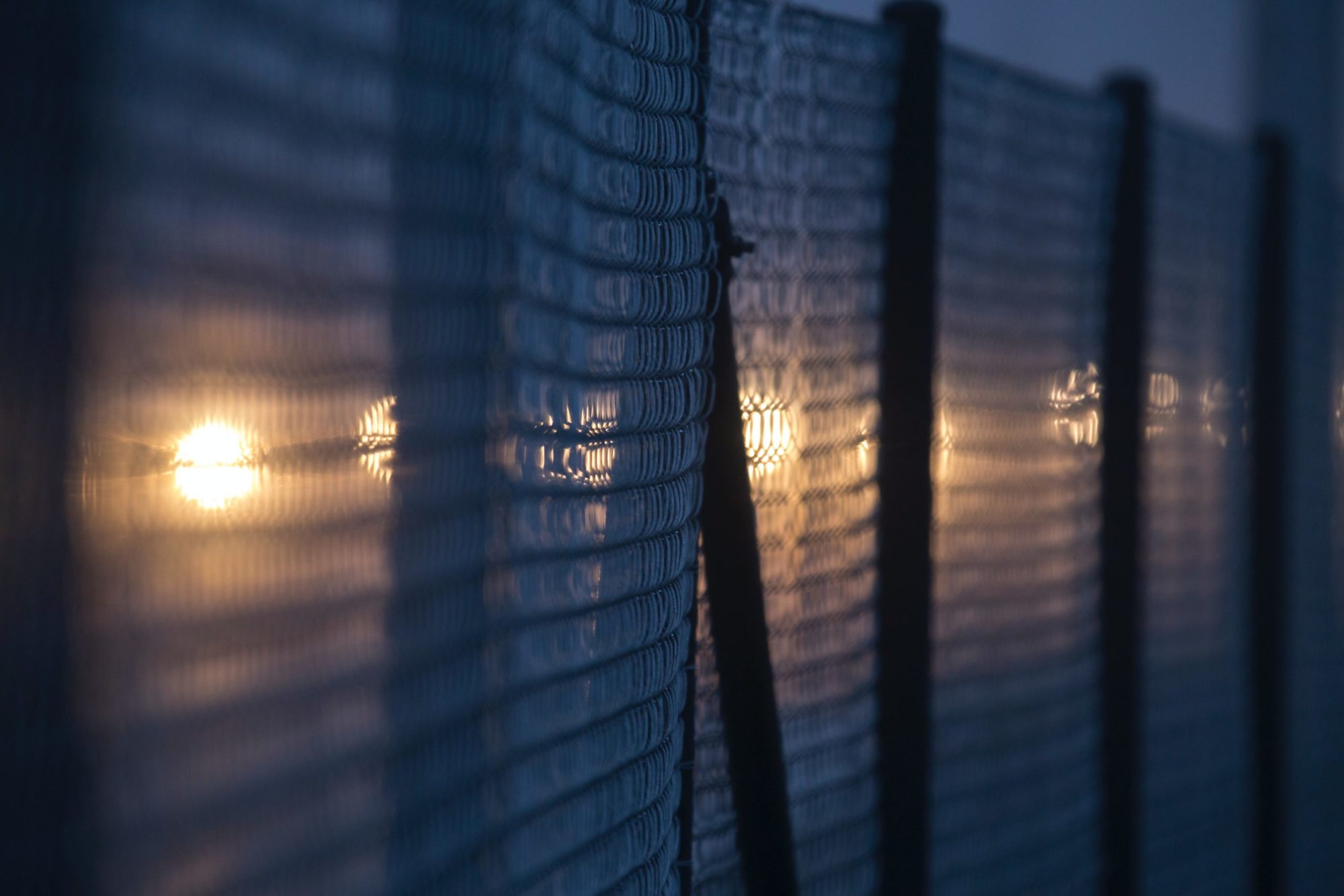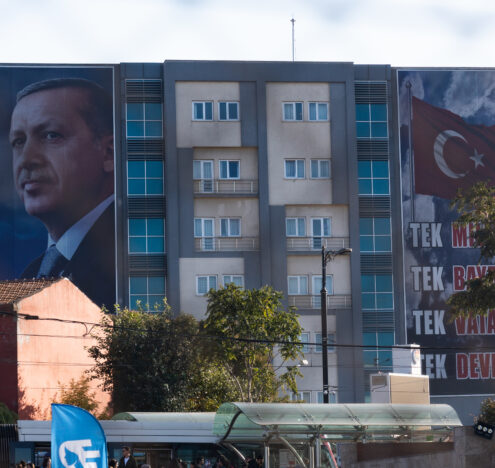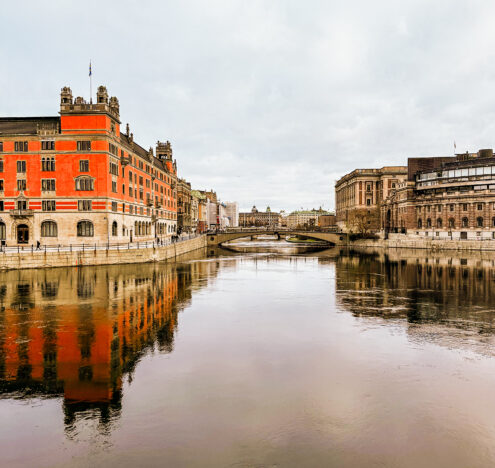First, it was the Customs and Border Protection (CBP) vehicles speeding along on the road in front of our campsite. Then it was the Border Patrol’s all-terrain vehicles moving swiftly on a ridge above us. I was about 10 miles north of the border with Mexico, near Peña Blanca Lake in southern Arizona, camping with my six-year-old son and some other families. Like fire trucks racing to a blaze, the Border Patrol mobilization around me was growing so large I could only imagine an emergency situation developing.
I started climbing to get a better look and soon found myself alone on a golden hill dotted with alligator junipers and mesquite. Brilliant vermilion flycatchers fluttered between the branches. The road, though, was Border Patrol all the way. Atop the hill opposite mine stood a surveillance tower. Since it loomed over our campsite, I’d been looking at it all weekend. It felt strangely like part of French philosopher Michel Foucault’s panopticon — in other words, I wasn’t sure whether I was being watched or not. But I suspected I was.
After all, that tower’s cameras could see for seven miles at night and its ground-sweeping radar operated in a 13-mile radius, a capability, one Border Patrol officer told me in 2019, worth “100 agents.” In the term of the trade, the technology was a “force multiplier.” I had first seen that tower freshly built in 2015 after CBP awarded a hefty contract to the Israeli company Elbit Systems. In other words, on top of that hill, I wasn’t just watching some unknown event developing; I was also in the middle of the border-industrial complex.
During Donald Trump’s years in office, the media focused largely on the former president’s fixation with the giant border wall he was trying to have built, a xenophobic symbol so filled with racism that it was far easier to find people offended by it than towers like this one. From where I stood, the closest stretch of border wall was 10 miles to the south in Nogales, a structure made of 20-foot-high steel bollards and covered with coiled razor wire. (That stretch of wall, in fact, had been built long before Trump took office.)
While the Biden administration has ditched the racist justifications that went with it, its officials continue to zealously promote the building of a border-wall system that’s increasingly profitable and ever more like something out of a science-fiction movie
What I was now witnessing, however, could be called Biden’s wall. I’m speaking about a modern, high-tech border barrier of a different sort, an increasingly autonomous surveillance apparatus fueled by “public-private partnerships.” The technology for this “virtual wall” had been in the works for years, but the Biden administration has focused on it as if it were a humane alternative to Trump’s project.
In reality, for the Border Patrol, the “border-wall system,” as it’s called, is equal parts barrier, technology, and personnel. While the Biden administration has ditched the racist justifications that went with it, its officials continue to zealously promote the building of a border-wall system that’s increasingly profitable and ever more like something out of a science-fiction movie.
As March ended, one week before my camping trip, I saw it up close and personal at the annual Border Security Expo in San Antonio, Texas.
ROBOTS THAT FEEL THE WORLD
The golden chrome robotic dog trotted right up to me on the blue carpet at the convention center hall. At my feet, it looked up as if it were a real dog expecting me to lean over and pet it. According to the Department of Homeland Security’s Science and Technology Directorate, this “dog” will someday patrol our southern border. Its vendor was undoubtedly trying to be cute when he made the dog move its butt back and forth as if wagging its tail (in reality, two thin, black antennae). Behind the vendor was a large sign with the company’s name in giant letters: Ghost Robotics. Below that was “Robots That Feel the World,” a company slogan right out of the dystopian imagination.
According to its organizers, this was the most well-attended Border Security Expo in its 15-year history. About 200 companies crowded the hall, trying to lure officials from CBP, US Immigration and Customs Enforcement, border sheriffs’ departments, and international border forces into buying their technologies, sensors, robots, detectors, and guns. As I stood staring at that surreal dog, behind me the company Teledyne Flir was showing off its video surveillance system: a giant retractable mast sitting in the bed of a black pickup truck. On the side of the truck were the words “Any Threat. Anywhere.”
Another company, Saxon Aerospace (its slogan: “Actionable Intelligence, Anytime, Anywhere”), had a slick, white, medium-sized drone on display. One vendor assured me that the drone market had simply exploded in recent years. “Do you know why?” I asked. His reply: “It’s like when a dog eats blood and gets carnivorous.”
Elsewhere, the red Verizon Frontline mobile command-and-control truck looked like it could keep perfect company with any Border Patrol all-terrain vehicle unit; while Dell, the Texas-based computer firm, displayed its own frontline mobile vehicle, promising that “whether you’re providing critical citizen services, innovating for the next generation, or securing the nation, we bring the right technology… and far-reaching vision to help guide your journey.”
And don’t forget 3M, which has moved well beyond its most famous product, Scotch tape, to provide “rugged and reliable equipment across DoD [Department of Defense], DoJ [Department of Justice], DHS [Department of Homeland Security], and US state and local agencies.” Top defense contractors like Airbus (with a shiny black helicopter on display in the center of the expo hall) were also present, along with top border contractors like General Dynamics, Lockheed Martin, and Elbit Systems.
Just the day before the expo opened, the Biden administration put out its fiscal year 2023 budget, which proposed $97.3 billion for the DHS, that agency’s largest in its two-decade history. The Customs and Border Protection part of that, $17.5 billion, would similarly be the most money that agency has ever received, nearly $1.5 billion more than last year. Although Immigration and Customs Enforcement received just a marginal increase, it will still get $8.5 billion. Combine just those two and that $26 billion would be the highest sum ever dedicated to border and immigration enforcement, significantly more than the $20 billion that the Trump administration started out with in 2017. As DHS secretary Alejandro Mayorkas put it, such a budget will help secure our “values.” (And in an ironic sense, at least, how true that is!)
“Notably,” Mayorkas added, “the budget makes smart investments in technology to keep our borders secure and includes funding that will allow us to process asylum claims more efficiently as we build a safe, orderly, and humane immigration system.”
What Mayorkas didn’t mention was that his border plans involve ever more contracts doled out to private industry. That’s been the case since 9/11 when money began to pour into border and immigration enforcement, especially after the creation of the Department of Homeland Security in 2002. With ever-growing budgets, the process of privatizing the oversight of our southern border increased significantly during the administration of President George W. Bush. (The first Border Security Expo was, tellingly enough, in 2005.) The process, however, soared in the Obama era. During the first four years of his presidency, 60,405 contracts (including a massive $766 million to weapons-maker Lockheed Martin) were issued to the tune of $15 billion. From 2013 to 2016, another 81,500 contracts were issued for a total of $13.2 billion.
In other words, despite his wall, it’s a misconception to think that Donald Trump stood alone in his urge to crack down on migration at the border. It’s true, however, that his administration did up the ante by issuing 87,293 border-protection contracts totaling $20.9 billion. For Biden, the tally so far is 10,612 contracts for $8 billion. If he keeps up that pace, he could rack up nearly $24 billion in contracts by the end of his first term, which would leave Trump’s numbers and those of every other recent president in the dust.
If so, the contracts of the Trump and Biden administrations would total nearly $45 billion, slightly surpassing the $44.3 billion spent on border and immigration enforcement from 1980 to 2002. In the media, border and immigration issues are normally framed in terms of a partisan divide between Democrats and Republicans. While there is certainly some truth to that, there are a surprising number of ways in which both parties have reached a kind of grim border consensus.
As Maryland Democratic Congressman Dutch Ruppersberger, a member of the House appropriations committee, said ever so beamingly on a screen at that Expo conference, “I have literally put my money where my mouth is, championing funding for fencing, additional Border Patrol agents, and state-of-the-art surveillance equipment.” And as Clint McDonald, a member of the Border Sheriff’s Association, said at its opening panel, the border is “not a red issue, it’s not a blue issue. It’s a red, white, and blue issue.”
When I asked the Ghost Robotics vendor if his robo-dog had a name, he replied that his daughter “likes to call it Tank.” He then added, “We let our customers name them as they get them.” While we were chatting, a prospective customer asked, “What about weapons mountable?” (That is, could buyers weaponize that dog?) The vendor immediately assured him that they were already working with other companies to make that happen.
Later, when I asked Border Patrol Chief Raul Ortiz about the surveillance dogs, he downplayed their significance, stressing the media hype around them, and saying that no robo-dogs were yet deployed anywhere on the border. Nonetheless, it was hard not to wander that hall and think, This, much more than a wall, could be our border future. In fact, if the “big, beautiful” wall was the emblem of Trump’s border policy, then for the Biden moment, think robo-dogs.
BORDER SECURITY IS NOT A “PIPE DREAM”
The night before I stood on that hill in Arizona, I had heard people passing through the campsite where my son and I were sleeping in a tent. Their footsteps were soft and I felt no fear, no danger. That people were coming through should hardly have been a surprise. Enforcement at our southern border has been designed to push such border-crossing migrants into just the sort of desert lands we were camping in, often under the cover of night.
The remains of at least 8,000 people have been found in those landscapes since the mid-1990s and many more undoubtedly died since thousands of families continue to search for lost loved ones who disappeared in the borderlands. Those soft footsteps I heard could have been from asylum seekers fleeing violence in their lands or facing the disaster of accelerating climate change — wilted crops and flooded fields — or economic dispossession in countries where foreign corporations and local oligarchies rule the day. Or all of that combined.
For years, I’ve been talking to migrants who crossed isolated and hazardous parts of the Arizona desert to bypass the walls and guns of the Border Patrol.
I thought of them when, on the last day of that Border Security Expo, I watched Palmer Luckey, the CEO of Anduril, a new border surveillance company, step up to the podium to introduce a panel on “The Digital Transformation of the Border.” The 20-something Luckey, already worth $700 million, had floppy brown hair and wore a Hawaiian shirt, cargo shorts, and flip-flops. He told the audience of border industry and Homeland Security officials that he was wearing shades because of recent laser surgery, not an urge to look cool.
He did look cool, though, as if he were at the beach. And he does represent the next generation of border tech. Since 2020, his company has received nearly $100 million in contracts from Customs and Border Protection.
His introduction to the panel, which sounded to me more like a pitch for financing, offered a glimpse of how the border-industrial complex now works. It was like listening to a rehearsal for the lobbying appearances he and his company would undoubtedly make in Congress for the 2023 budget. In 2021, Anduril spent $930,000 lobbying on issues that mattered to its executives. It also gifted political candidates with nearly $2 million in campaign contributions.
Luckey’s message was: fund me and you’ll create a “durable industrial base,” while ensuring that border security will not be a “pipe dream.” Indeed, in his vision, the new border-surveillance infrastructure he represents will instead be an autonomous “pipeline,” delivering endlessly actionable information and intelligence directly to the cell phones of Border Patrol agents.
I was thinking about his pitch again as I stood atop that hill watching the border apparatus quickly mobilize. I was, in fact, looking at yet another Border Patrol vehicle driving by when I suddenly heard a mechanical buzzing overhead that made me think a drone might be nearby. At our southern border, the CBP not only operates the sizeable Predator Bs (once used in US military and CIA operations abroad), but small and medium-sized drones.
I could see nothing in the sky, but something was certainly happening. It was as if I were at the Expo again, but now it was real life. I was, in fact, in the middle of the very surveillance-infrastructure pipeline Luckey had described, where towers talk to each other, signal to drones, to the all-terrain vehicle unit, and to roving Border Patrol cars.
Then the buzzing sound abruptly stopped as a CBP helicopter lifted into the air, its loud propellers roaring.
THE REAL CRISIS
After that dramatic helicopter exit, I wondered if there was indeed a border emergency and finally decided to get in my car and see what I could find out, leaving my son with our friends. As I rounded a corner, I came across Border Patrol agents and vehicles at the side of the road with a large group of people who, I assumed, were migrants. About four individuals had already been put in the back of a green-striped Border Patrol pickup truck, handcuffed and arrested. They had the tired look I knew so well of people who had walked an entire night in an unknown, hazardous landscape, had failed, and were now about to be deported. The agents of the ATV detail were lounging around in their green jumpsuits as their quads idled, as if this were all in a day’s (or night’s) work, which indeed it was.
I remembered then hearing those footsteps as my son slept soundly and thought: The border is not in crisis. That’s impossible. The border’s inanimate. It’s the people walking through the desert — the ones who crept past us and those in the back of that truck or soon to be put in other trucks like it, arrested so far from home — who are actually in crisis. And it’s a crisis almost beyond the ability of anyone who hasn’t been displaced to imagine. Otherwise, why would they be here in the first place?
The ongoing border-crisis story is another example of what Uruguayan writer Eduardo Galeano once would have called an “upside down” world, so twisted in its telling that the victim becomes the victimizer and the oppressor, the oppressed. If only there were a way we could turn that story — and how so many in this country think about it — right-side up.
As I was mulling all of that over, I suddenly noticed the omnipresent “eye” of the Elbit Systems tower “staring” at me again. Its superpower cameras were catching the whole scene. Perhaps its radar had detected this group to begin with. After all, the company’s website says, “From the darkest of nights to the thickest of brush, our border solutions help predict, detect, identify, and classify items of interest.” Not people, mind you, but the handcuffed “items of interest” in the back of that truck.
As I watched the scene unfold, I remembered a moment at that Expo when a man from the Rio Grande Valley asked a panel of Department of Homeland Security officials a rare and pointed question. Gesturing toward the hall where all the companies were hawking their wares, he wondered why, if there was so much money to be made in border security, “would you even want a solution?”
The long uncomfortable silence that followed told me all I needed to know about the real border crisis in this country.
Todd Miller has written on border and immigration issues for the New York Times, Al Jazeera America, and the NACLA Report on the Americas. He writes a weekly post for the Border Chronicle. His latest book is “Build Bridges, Not Walls: A Journey to a World Without Borders.” You can view more of his work at toddmillerwriter.com.
This piece originally appeared in TomDispatch.





















